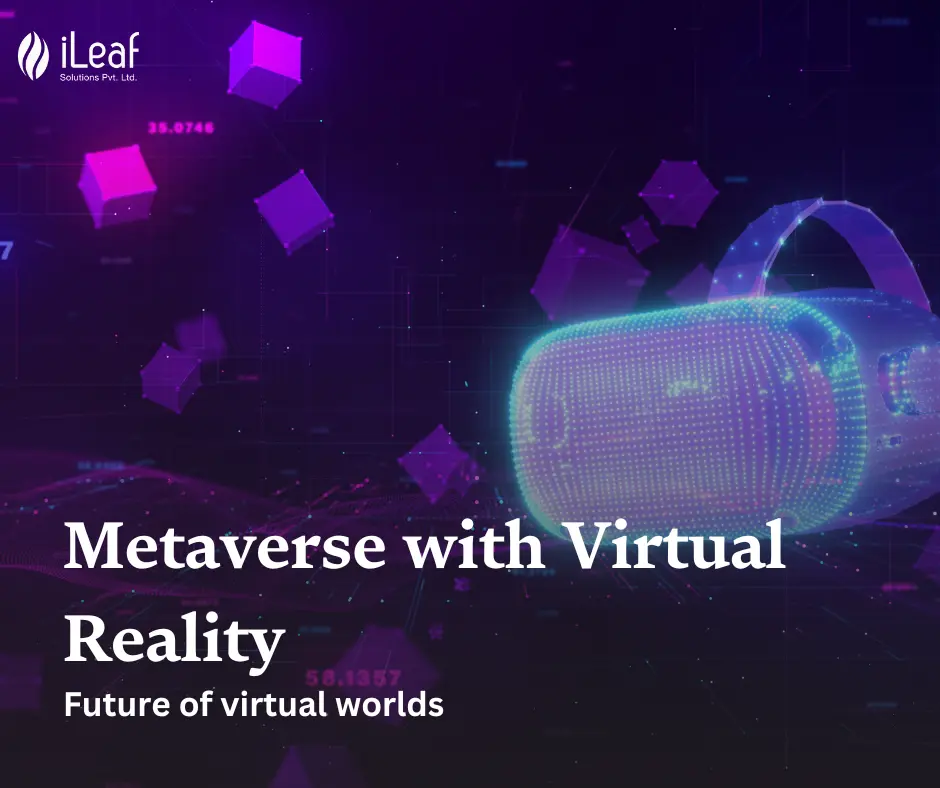Beyond the Metaverse: How AI will shape future virtual worlds

Table of Contents
- Introduction
- Understanding the Metaverse and its Relationship with Virtual Reality
- The Key Role of AI in Advancing Immersive Virtual Experiences
- AI-Powered User Interactions: From Chatbots to Emotion Recognition in VR
- Emerging Technologies Defining the Future of VR and AI
- Embracing an Ethical and Inclusive Future for AI-driven Virtual Realities
Introduction
The concept of virtual worlds has captivated imaginations for decades, from the immersive experiences depicted in science fiction to the burgeoning world of the Metaverse. While the Metaverse promises a persistent, interconnected network of virtual spaces, it's the potential of AI in Virtual Worlds that will truly shape the future of these digital frontiers.
Understanding the Metaverse and its Relationship with Virtual Reality
The so-called "Metaverse" refers to such a mind-blowing future internet where networking of 3D virtual worlds brings people together more effectively. Or think of it as a virtual place that contains no end of virtual venues, allowing you to work, play, study--indeed live your life there--and not just as some image on a screen but with a depth never before encountered. Indeed, while the Metaverse makes use of VR technology, VR itself is a method of creating false sensory experiences. In VR, you find that the sense data supplied to your brain is more like the real world—This is the main difference between AR and MR. Furthermore, VR experiences are not confined to the Metaverse, but can occur as more immersive and focused mini-worlds within it.
The Key Role of AI in Advancing Immersive Virtual Experiences
Artificial intelligence will critically help virtual worlds break past their current limitations. Here's how:
Personalization: AI can analyze user data to adapt a virtual experience to one's tastes. Imagine a virtual world that listens to your interests, recommended activities, tailoring your avatar, and generating environments for your mental mood.

Dynamic Content Creation: AI can be used to generate dynamic content within virtual spaces. This may include the creation of realistic, responsive virtual characters that are able to converse, react to user choices, and even learn and adapt over time. In addition to the above, AI can also be used procedurally to create environments that provide the user with a feeling of continuous discovery and new experiences.
Enhanced Learning and Education: Virtual tutors—artificially intelligent—can provide personalized experiences with adaptation to student pace and style of learning. Imagine walking among Egyptian pyramids or dissecting a virtual frog in a realistic, interactive environment.
Seamless User Interaction: AI can be used to provide more natural and intuitive user interactions within VR. Voice and gesture recognition enable users to interact with virtual objects and characters in a more natural way.
AI-Powered User Interactions: From Chatbots to Emotion Recognition in VR
AI is going to change the way we interact with virtual worlds. Here are some concrete examples:
Conversational AI: AI-powered chatbots can be tour guides, companions, or tutors within VR experiences. Imagine a virtual museum where the knowledgeable AI assistant tailors the tour to your interests, or a language-learning app where you get to talk to a virtual native speaker.
Emotion Recognition: The use of AI can be done to analyze facial expressions and voice intonations in order to understand the emotional state of the user in VR. This allows for further personalization of experience or even emotional support within virtual environments.
Emerging Technologies Defining the Future of VR and AI
Several emerging technologies hold immense potential to shape the future of VR and AI:
Natural Language Processing (NLP): Advances in NLP will allow for more natural and nuanced interactions between users and AI-powered characters and assistants within VR.
Augmented Reality (AR): Merging the worlds of the physical and virtual, AR can create a hybrid experience where AI-enabled virtual elements enhance the real world.

Haptic Technology: This technology gives the user feedback through touch, allowing for the feeling of virtual objects and surfaces within virtual reality. Feel the texture of the virtual painting or the weight of the virtual object in your hand.
Embracing an Ethical and Inclusive Future for AI-driven Virtual Realities
As with any powerful technology, AI-driven VR brings along ethical implications that need to be taken into serious consideration:
Privacy Issues: AI systems, in their way of giving a more personalized experience, need data from the users. Strong guidelines and control by the user are necessary so that privacy is upheld.
Bias in AI Algorithm: AI algorithms may lead to perpetuation of societal biases. We need to ensure that AI-driven VR experiences are inclusive and representative of all kinds of populations.
Addiction and Mental Health: VR is very engaging. Concerns are being raised about addiction. Mental health should be taken into consideration when designing AI-powered VR experiences.
By being aware of these problems beforehand, we can help shape AI in a way that it designs a future for VR that is not only immersive and engaging but also ethical and inclusive. The future of virtual worlds can be found at the intersection of VR and AI. As AI capabilities further develop, virtual experiences will become ever more personalized, dynamic, and interactive. Embracing the power of AI responsibly, we can have a future where virtual worlds enrich our lives and bind us together; unlock boundless possibilities for learning, exploring, and creating with ileaf.














